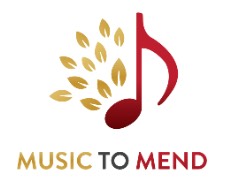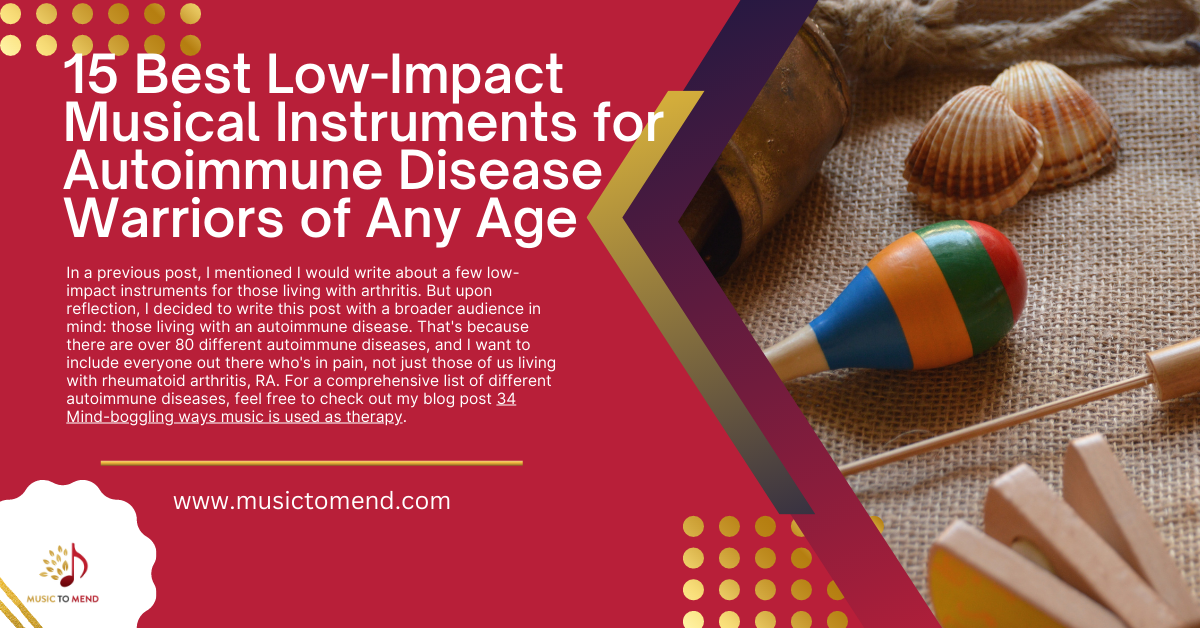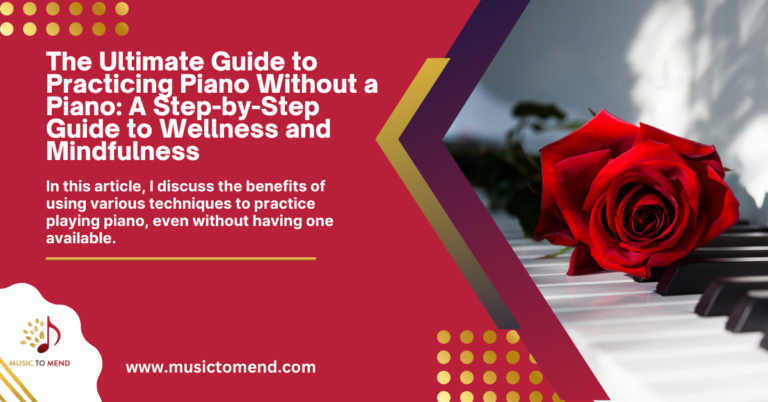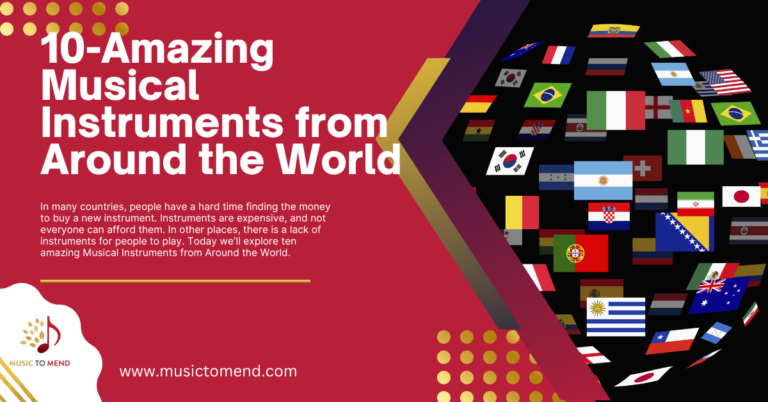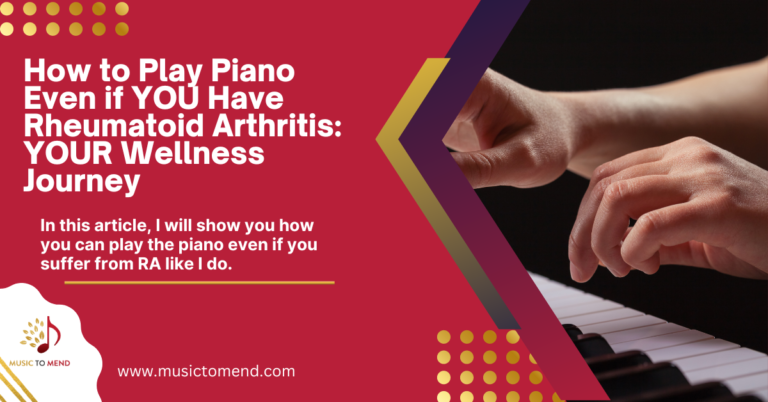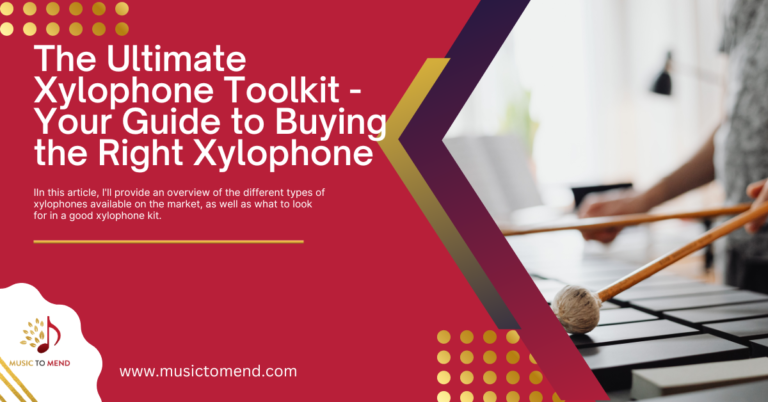15 Best Low-Impact Musical Instruments for Autoimmune Disease Warriors of Any Age
In a previous post, I mentioned I would write about a few low-impact instruments for those living with arthritis. But upon reflection, I decided to write this post with a broader audience in mind: those living with an autoimmune disease. That’s because there are over 80 different autoimmune diseases, and I want to include everyone out there who’s in pain, not just those of us living with rheumatoid arthritis, RA. For a comprehensive list of different autoimmune diseases, feel free to check out my blog post 34 Mind-boggling ways music is used as therapy.
You’ll notice how I use the word ‘warrior’ in the title of today’s post. That’s because I don’t like to be referred to as someone who ‘suffers’ from arthritis. Instead, my hope is you start considering yourself as a ‘warrior’, like I do. How common is arthritis? More than 350 million people have arthritis globally. In the United States, 1 in 4 adults has arthritis. Nearly 4% of the world’s population is affected by one of more than 80 different autoimmune diseases, the most common of which include type 1 diabetes, multiple sclerosis, rheumatoid arthritis, lupus, Crohn’s disease, psoriasis and scleroderma. Autoimmune diseases represent the third most common cause of chronic illness in the United States. Although many autoimmune diseases are rare, the National Institutes for Health (NIH) estimates that they collectively affect between 5% and 8% percent of the U.S. population. For unknown reasons, the prevalence of autoimmune diseases is increasing. Click here to read more: National Stem Cell Foundation
We take pills, get injections, succumb to needles poking us, use ice packs when we’re hot, heating pads when we’re cold, drink teas and vitamins, etc. That’s what we warriors go through! Painful, unpleasant, but science-based medicine has indeed helped me in my rheumatoid arthritis journey. In addition to modern-day medicine for treating arthritis, music is also considered a marvelous type of wellness therapy. If you’re just considering trying an instrument as therapy, I suggest you try a low-impact instrument, and of course, talk to your doctor before starting any music as therapy program.
So, buckle-up, grab a cup of tea and let’s dive in, shall we?
Here are my top recommendations of the 11 Best Low-impact musical instruments for you to consider:
- Piano
The piano. The piano is a keyboard instrument that produces sound by striking strings with hammers, characterized by its large range and ability to play chords freely. It is a musical instrument that has broad appeal. Naturally, I’m going to talk about my favorite instrument in the whole world…the piano! The piano is such a beautiful instrument and playing it just takes me to a whole other world, playing beautiful tunes I’ve improvised, and singing lovely songs. And of course, I’m offering online piano lessons to those of you who have never played the piano and are ready to learn. I’m here to teach you step-by-step, easy-to-learn tunes in weeks, instead of years. The piano is a must to consider if you’re wanting to learn but have been hesitant in previous years. If you’d like a list of digital pianos you can purchase, check out my blog post here: 5 Recommendations to Help You Find the Best Entry-Level Keyboard
2. Organ
Organ, in music, is a keyboard instrument, operated by the player’s hands and feet, in which pressurized air produces notes through a series of pipes organized in scalelike rows. The term organ encompasses reed organs and electronic organs but, unless otherwise specified, is usually understood to refer to pipe organs. Now, if you are looking for an organ sound, but don’t want to buy the organs you see in churches or cathedrals, check out the digital pianos I recommended; some of those digital pianos are extremely versatile, and offer various sounds, including organ. It’s worth checking out.

This Vintage Electric Organ is what started my passion of piano all those years ago; hence the word ‘vintage’. I played this little organ so much that it broke! Whoa..what a ride back through memory lane!
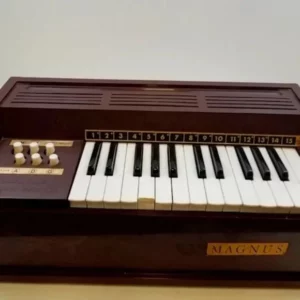
3. Bongos
Bongos are an Afro-Cuban percussion instrument consisting of a pair of small open-bottomed hand drums of different sizes. They are struck with both hands, most commonly in an eight-stroke pattern called martillo (hammer). They are mainly employed in the rhythm section of son cubano and salsa ensembles, often alongside other drums such as the larger congas and the stick-struck timbales.
Note: Commissions may be earned from the links featured in today’s blog post.
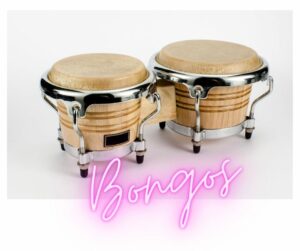
4. Maracas
A maraca (pronunciation(help·info)), sometimes called rumba shaker or chac-chac, is a rattle which appears in many genres of the Caribbean and Latin music. It is shaken by a handle and usually played as part of a pair.
Maracas (from Guaranímbaracás), also known as tamaracas, were rattles of divination, an oracle of the Brazilian Tupinamba people, found also with other Indigenous ethnic groups, such as the Guarani, Orinoco and in Florida. Rattles made from Lagenaria gourds are being shaken by the natural grip, while the round Crescentia calabash fruits are fitted to a handle. Human hair is sometimes fastened on the top, and a slit is cut in it to represent a mouth, through which their shamans (payes) made it utter its responses. A few pebbles are inserted to make it rattle and it is crowned with the red feathers of the guarás. Every man had his maraca. It was used at their dances and to heal the sick. Andean curanderos (healers) use maracas in their healing rites. UMIKU Maracas,2psc 10inch Large Wood Rumba Shakers
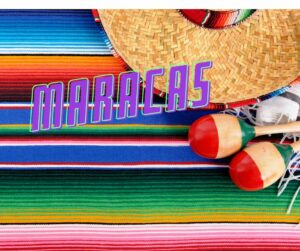

5. Castanets
Castanets, also known as clackers or palillos, are a percussion instrument, used in Spanish, Kalo, Moorish, Ottoman, Italian, Sephardic, Swiss, and Portuguese music. In ancient Greece and Rome there was a similar instrument called the crotalum. The instrument consists of a pair of concave shells joined on one edge by a string. They are held in the hand and used to produce clicks for rhythmic accents or a ripping or rattling sound consisting of a rapid series of clicks. They are traditionally made of hardwood (chestnut; Spanish: castaño), although fiberglass has become increasingly popular.
In practice, a player usually uses two pairs of castanets. One pair is held in each hand, with the string hooked over the thumb and the castanets resting on the palm with the fingers bent over to support the other side. Each pair will make a sound of a slightly different pitch. DOBANI RED CEDAR CASTANETS 2.63-INCH – PAIR
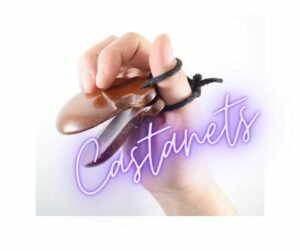
6. Drums
Snare drum, also called side drum, military and orchestral percussion instrument having, nylon, wire, or wire-covered silk strings (snares) stretched across the lower, or snare, head; the snares vibrate sympathetically with the lower head (to which vibration is transmitted from the upper, or batter, head by air vibrations inside the drum), causing a snappy, penetrating, relatively high-pitched sound. The modern snare drum has a cylindrical shell of wood, plywood, or metal 5–12 inches (13–30 cm) high and 14–16 inches (35–40 cm) in diameter; deeper models, called field or guard’s pattern drums, are used in many military bands. The heads, beaten with two tapered sticks ending in small knobs of wood or nylon, are of calfskin or plastic. They are held in place by a flesh hoop (around which the membrane is lapped) and a counterhoop. Membrane tensioning is by screws that act independently on each head, by metal rods, or, now chiefly in military bands, by rope lacings.EASTROCK Snare Drum Set 14X5.5inch
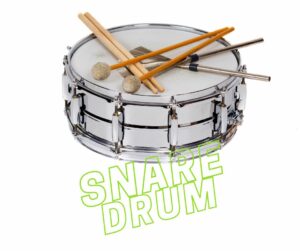
7. Xylophone
The xylophone (another one of my favorite instruments…by the way), is a musical instrument in the percussion family that consists of wooden bars struck by mallets. Like the glockenspiel (which uses metal bars), the xylophone essentially consists of a set of tuned wooden keys arranged in the fashion of the keyboard of a piano. Each bar is an idiophone tuned to a pitch of a musical scale, whether pentatonic or heptatonic in the case of many African and Asian instruments, diatonic in many western children’s instruments, or chromatic for orchestral use.
The term xylophone may be used generally, to include all such instruments such as the marimba, balafon and even the semantron. However, in the orchestra, the term xylophone refers specifically to a chromatic instrument of somewhat higher pitch range and drier timbre than the marimba, and these two instruments should not be confused. A person who plays the xylophone is known as a xylophonist or simply a xylophone player. Here at MusicToMend, I teach xylophone, in addition to the piano. My teachings involve step-by-step instruction, how to hold mallets, etc. You’ll be playing your favorite tunes in no time! Voodans 32 Note Xylophone
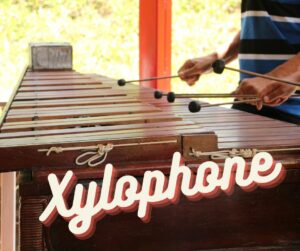
8. Glockenspiel
The glockenspiel (German pronunciation: [ˈɡlɔkənˌʃpiːl] or [ˈɡlɔkŋ̍ˌʃpiːl], glocken: bells and spiel: set) or bells is a percussion instrument. It consists of pitched aluminum or steel bars arranged in a keyboard layout. This makes the glockenspiel a type of metallophone, similar to the vibraphone.
The glockenspiel is played by striking the bars with mallets, often made of a hard material such as metal or plastic. Its clear, high-pitched tone is often heard in orchestras, wind ensembles, marching bands, and in popular music. Second to the Xylophone, the Glockenspiel is another favorite of mine. And…I like saying the word…Glockenspiel! ENNBOM 32 Note Natural Glockenspiel Kit
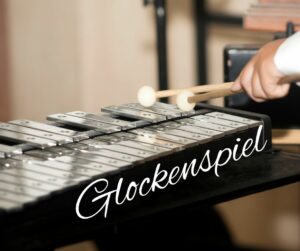
9. Congas
The conga, also known as tumbadora, is a tall, narrow, single-headed drum from Cuba. Congas are staved like barrels and classified into three types: quinto (lead drum, highest), tres dos or tres golpes (middle), and tumba or salidor (lowest). Congas were originally used in Afro-Cuban music genres such as conga (hence their name) and rumba, where each drummer would play a single drum. Following numerous innovations in conga drumming and construction during the mid-20th century, as well as its internationalization, it became increasingly common for drummers to play two or three drums. Congas have become a popular instrument in many forms of Latin music, (when played by conjuntos), descarga, Afro-Cuban jazz, salsa, songo, merengue and Latin rock. Latin Percussion LP City Wood Congas 10″ & 11″ Set – Vintage Sunburst

10. Tamborine
Tambourine, small frame drum (one whose shell is too narrow to resonate the sound) having one or two skins nailed or glued to a shallow circular or polygonal frame. The tambourine is normally played with the bare hands and often has attached to it jingles, pellet bells, or snares. European tambourines typically have one skin and jingling disks set into the sides of the frame. The designation tambourine refers specifically to the European frame drum; however, the term is often extended to include all related frame drums, such as those of the Arabic countries, and sometimes those probably unrelated, such as the shaman’s drums of Central Asia, North America, and the Arctic. Tambourine 10 inches 2 Row of Jingles, Wooden Frame, Headless or for kids: The Dreidel Company Flashing Tambourines Hand Held, 9″ Inch Tambourine Flashes in Assorted Colors, Ring Metal

11. Güiro
The güiro (Spanish pronunciation: [ˈɡwiɾo]) is a Latin American percussion instrument consisting of an open-ended, hollow gourd with parallel notches cut in one side. It is played by rubbing a stick or tines (see photo) along the notches to produce a ratchet sound.
The güiro is commonly used in Puerto Rican, Cuban and other forms of Latin American music, and plays a key role in the typical rhythm section of important genres like son, trova and salsa. Playing the güiro usually requires both long and short sounds, made by scraping up and down in long or short strokes.[1]
The güiro, like the maracas, is often played by a singer. It is closely related to the Cuban guayo, Dominican güira, and Haitian graj which are made of metal. Other instruments similar to the güiro are the Colombian guacharaca, the Brazilian reco-reco, the quijada (cow jawbone) and the frottoir (French) or fwotwa (French Creole) (washboard). The güiro is a notched, hollowed-out gourd. Often, the calabash gourd is used. The güiro is made by carving parallel circular stripes along the shorter section of the elongated gourd. Today, many güiros are made of wood or fiberglass. Latin Percussion CP249A Cp Fish Style Guiro Disclosure: Some of the links in this article may be affiliate links, which can provide compensation to me at no cost to you if you decide to purchase a paid plan.
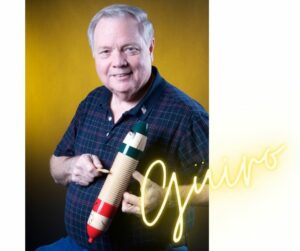
12. Triangle
The triangle is a musical instrument in the percussion family, and is classified as an idiophone in the Hornbostel-Sachs classification system. Triangles are made from a variety of metals including aluminum, beryllium copper, brass, bronze, iron, and steel. The metal is formed into a triangle shape by bending or casting methods. The instrument is usually held by a loop of some form of thread or wire at the top curve. The triangle theoretically has indefinite pitch, and produces a plurality of overtones when struck with an appropriate beater. EASTROCK Triangle Instrument 3 Packs 4 5 6 Inch Percussion Instrument Set Hand Percussion Triangles with Striker Disclosure: Some of the links in this article may be affiliate links, which can provide compensation to me at no cost to you if you decide to purchase a paid plan.

The cabasa, similar to the shekere, is a percussion instrument that is constructed with loops of steel ball chain wrapped around a wooden cylinder. The cylinder is fixed to a long, wooden or plastic handle.
The metal cabasa was created by Martin Cohen, founder of Latin Percussion. This company has built a more durable cabasa that they call an afuche-cabasa (pictured below). It provides a metallic, rattling sound when shaken or twisted, similar to the sound of a rattlesnake. It is often used in Latin jazz, especially in bossa nova pieces. Precise rhythmic effects can be gained by the advanced player. The player places his non-dominant hand on the metal chain, to provide pressure, while holding the wooden handle with the other hand and twisting the instrument back and forth depending on the rhythmic pattern desired. In addition to Latin music, many band and orchestra pieces call for the cabasa. Latin Percussion LP234A Standard Afuche Cabasa
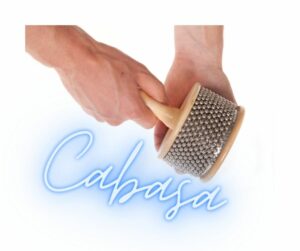
13. Bodhrán
The bodhrán (/ˈbaʊrɑːn, baʊˈrɑːn, ˈbɔːrɑːn, ˈbɔːrən/, Irish: [ˈbˠəuɾˠaːnˠ]; plural bodhráin or bodhráns) is a frame drum of Irish origin ranging from 25 to 65 cm (10–26 in) in diameter, with most drums measuring 35–45 cm (14–18 in). The sides of the drum are 9–20 cm (3+1⁄2–8 in) deep. A goatskin head is tacked to one side (synthetic heads or other animal skins are sometimes used). The other side is open-ended for one hand to be placed against the inside of the drum head to control the pitch and timbre.
One or two crossbars, sometimes removable, may be inside the frame, but this is increasingly rare on modern instruments. Some professional modern bodhráns integrate mechanical tuning systems similar to those used on drums found in drum kits. It is usually with a hex key that the bodhrán skins are tightened or loosened depending on the atmospheric conditions. Trinity College TB-3 Irish Bodhran – Dark Brown Rim
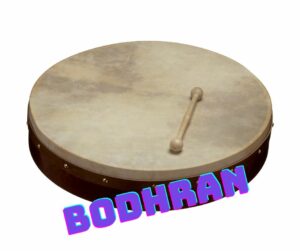
15. Standing Bell / Resting Bell (Tibetan Singing Bowl)
A standing bell or resting bell is an inverted bell, supported from below with the rim uppermost. Such bells are normally bowl-shaped, and exist in a wide range of sizes, from a few centimetres to a metre in diameter. They are often played by striking, but some—known as singing bowls—may also be played by rotating a mallet around the outside rim to produce a sustained musical note.
Struck bowls are used in some Buddhist religious practices to accompany periods of meditation and chanting. Struck and singing bowls are widely used for music making, meditation and relaxation, as well for personal spirituality. They have become popular with using music as therapy, sound healers and, yoga practitioners. For my recommendation on Tibetan Singing Bowls, click here: Tibetan Singing Bowls
Disclosure: Some of the links in this article may be affiliate links, which can provide compensation to me at no cost to you if you decide to purchase a paid plan.
I’ve attached some audio files with music you can play along with; I’m sure you’ll find one that will make want to reach for one of the musical instruments I mention above. Happy music making!

Abuela Canela, Artist Cumbia Connection
El Baile del Barrio, Artist El Equippo Del Norte
It’s hard to believe that three years ago I was unable to walk, hold a pencil, and actively looking for an assisted living facility. Fortunately, modern medicine, (and lots of trials), have gotten me to this peaceful , musical place. A place where I’m able to share my passion of music with you! I hope this post has given you some ideas on musical instruments you can play to relieve stress, and find new hobbies by learning to play musical instruments. These beautiful and highly revered instruments are sure to be low-impact for anyone struggling with joint pain, depression, stress, anxiety, etc.
Whether you’re interested in finding ways to relieve pain from arthritis, Lupus, depression, PTSD, grief, cancer, diabetes, etc., or sharing this post with a loved one or friend, I hope you’re inspired to embrace music and let the magical healing powers of music into your life! We are all warriors!
